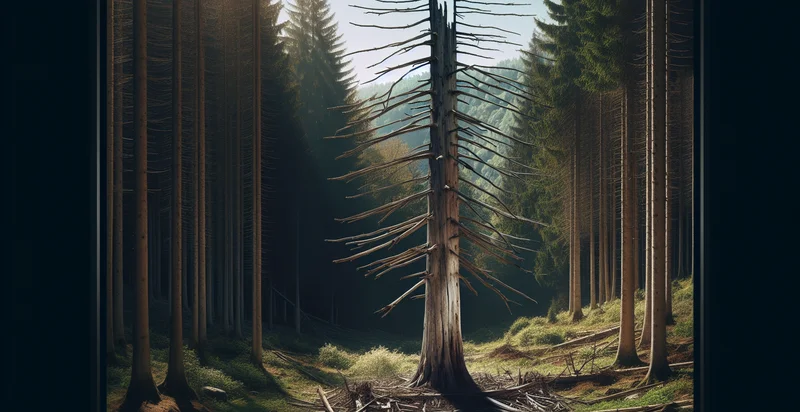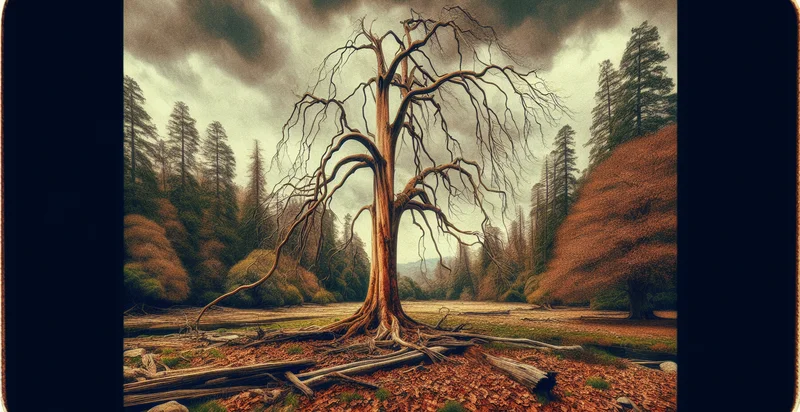Identify if a tree is dead
using AI
Below is a free classifier to identify if a tree is dead. Just upload your image, and our AI will predict if a tree is dead - in just seconds.

Contact us for API access
Or, use Nyckel to build highly-accurate custom classifiers in just minutes. No PhD required.
Get started
import nyckel
credentials = nyckel.Credentials("YOUR_CLIENT_ID", "YOUR_CLIENT_SECRET")
nyckel.invoke("if-a-tree-is-dead", "your_image_url", credentials)
fetch('https://www.nyckel.com/v1/functions/if-a-tree-is-dead/invoke', {
method: 'POST',
headers: {
'Authorization': 'Bearer ' + 'YOUR_BEARER_TOKEN',
'Content-Type': 'application/json',
},
body: JSON.stringify(
{"data": "your_image_url"}
)
})
.then(response => response.json())
.then(data => console.log(data));
curl -X POST \
-H "Content-Type: application/json" \
-H "Authorization: Bearer YOUR_BEARER_TOKEN" \
-d '{"data": "your_image_url"}' \
https://www.nyckel.com/v1/functions/if-a-tree-is-dead/invoke
How this classifier works
To start, upload your image. Our AI tool will then predict if a tree is dead.
This pretrained image model uses a Nyckel-created dataset and has 2 labels, including Alive Tree and Dead Tree.
We'll also show a confidence score (the higher the number, the more confident the AI model is around if a tree is dead).
Whether you're just curious or building if a tree is dead detection into your application, we hope our classifier proves helpful.
Related Classifiers
Need to identify if a tree is dead at scale?
Get API or Zapier access to this classifier for free. It's perfect for:
- Urban Forestry Management: Municipalities can utilize the dead tree identification function to monitor the health of trees in urban areas. By identifying dead trees efficiently, city officials can prioritize removal and maintenance efforts, enhancing urban biodiversity and safety for residents.
- Environmental Research: Environmental scientists can leverage the technology to assess forest health and ecosystem dynamics. Detecting dead trees aids in understanding disease spread, pest infestations, and the overall ecological impact on biodiversity.
- Insurance Risk Assessment: Insurance companies can integrate the dead tree identification function into their property assessments. By identifying dead trees near insured properties, insurers can better evaluate potential risks and adjust policy premiums accordingly.
- Agricultural Management: Farmers can use this identification tool to monitor trees on their land, ensuring healthy crops and preventing losses. Early detection of dead trees can lead to timely intervention, preserving resources and boosting productivity.
- Landscaping Services: Landscaping companies can implement the dead tree identifier in their maintenance routines. This allows for proactive customer service by identifying hazards and enhancing the aesthetic appeal of properties through timely tree removal.
- Forest Conservation Programs: Conservation organizations can utilize this technology for monitoring forest reserves. Identifying dead trees can help them assess forest health and devise necessary plans to promote conservation and sustainable forestry practices.
- Renewable Energy Projects: Companies developing solar farms or wind energy projects can use this identification function to evaluate land suitability. By removing dead trees before installation, they can reduce hazards and improve site aesthetics for energy projects.


